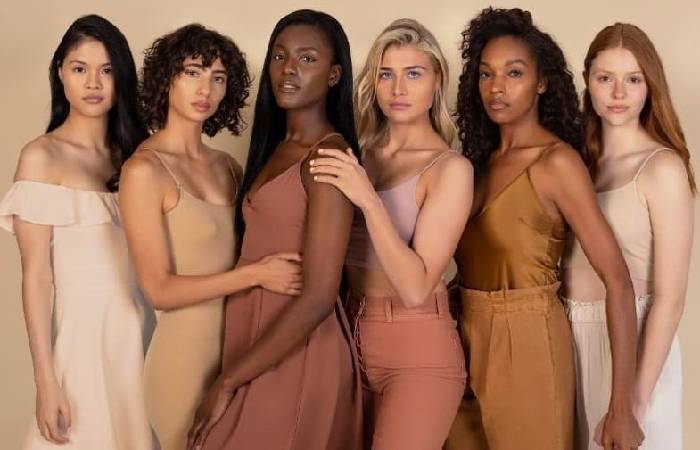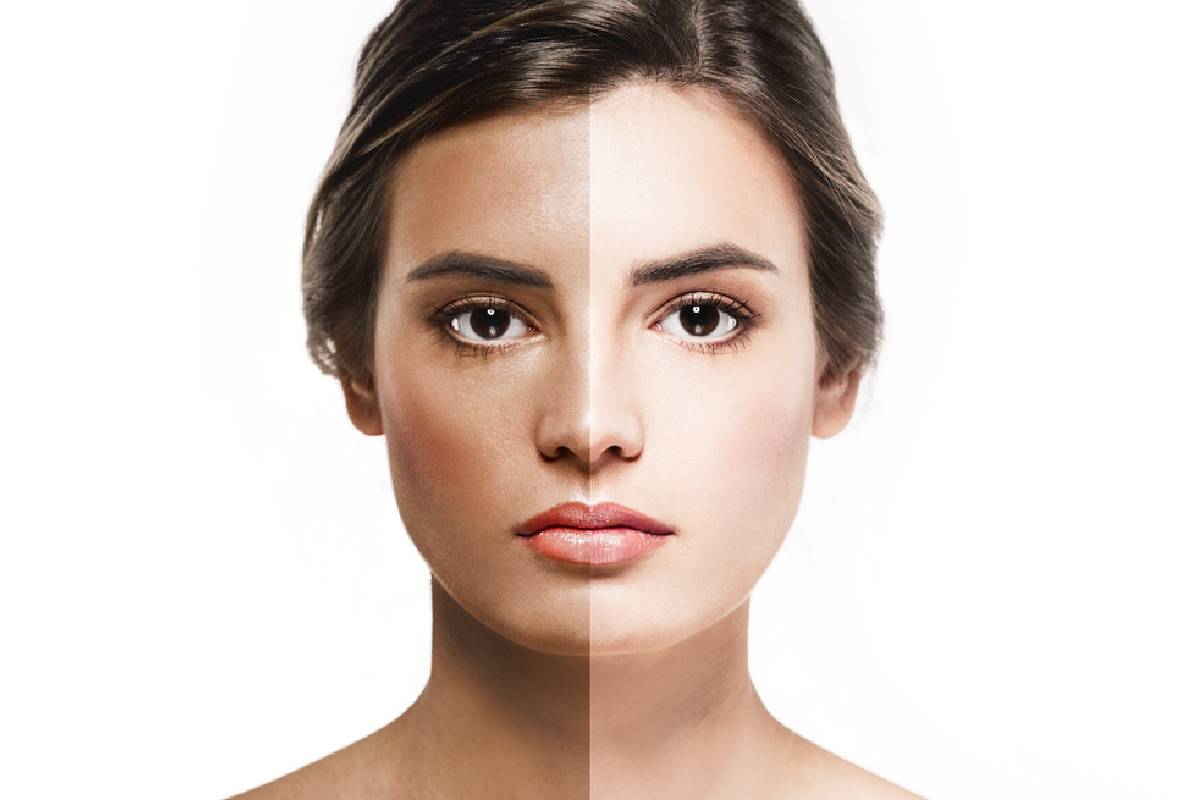Tan Skin Tone has many benefits. It’s a desirable complexion for many, but it can be challenging to describe. What is tan skin?
Tanned skin, as the name suggests, tans easily. It is a pale brown skin tone that resembles a Mediterranean skin tone, often with golden or olive undertones. Naturally, tanned skin also shows fewer signs of ageing over time.
Tan skin tone varieties from type 3 to type 5 on the Fitzpatrick Pigment Phototype Scale (see image below). This complexion tans easily and is less susceptible to signs of ageing, such as fine lines and wrinkles.
Read on to learn more about tanned skin tone and the best colours and makeup for tanned skin.
Table of Contents
What is Tan Skin Tone?

In western or northern countries, tanned skin has almost always been desirable because it means a person can travel to warmer countries on vacation.
In about parts of the world, for example, in Asia, tanned skin is less desirable because it is associated with lower economic status for someone who works in the fields. This view has primarily faded; in today’s modern world, tanned skin is considered beautiful.
A person with tanned skin has a pale brown complexion ranging from type 3 to type 5 on the Fitzpatrick scale. It depends on how light or dim your skin is, and it can be golden tan or dark tan but is constantly described as tan skin.
Also, the term tan originally comes from the word annum, which means oak bark, and this bark was one of the resources used in tanning leather goods. It wasn’t until 1950 that the word tan was used as a colour classification.
The tanned complexion also belongs to the classification of medium skin colours with possible golden or olive undertones, and it is lighter than dark skin but darker than pale skin. By examining the colour of your skin’s surface, you will know if you have a tanned complexion.
You have a fair complexion if your skin is very reasonable and burns quickly. You have a fair complexion if your skin is light in colour, and you have more beige or yellow undertones than those with a fair complexion.
If your skin has possible olive undertones, you have a medium or tan skin tone. But if your skin has a deeper, darker complexion, it can be classified as a dark complexion.
The Best Colors for a Tanned Complexion

Many fair-skinned people attempt to achieve tanned skin either by tanning or at a tanning salon. So if you take a natural tan, you are blessed. Also, choosing colours that match your skin tone will not be a problem since you will have hundreds of viable options.
Colours to Use
The primary colour concept you can use for your tan skin tone is to create a contrast that makes it stand out. The warm, bright colours will accentuate your tanned complexion. So choose green, orange or red as these colours will make your skin glow.
Earth colours or tones will also make your tanned skin look more luminous. You can include warm shades of yellow, shades of red, grey, tan, and brown in your wardrobe. Navy blue, black, and metallic colours like bronze, copper, and gold will flatter your tanned complexion.
How about good hair colour for a tanned complexion? The excellent hair colour for tanned skin is chocolate brown, and the warm shade of chocolate brown blends perfectly with tanned skin. Other shades of brown or red are great hair colours for a tanned complexion.
Other hair colours for tan skin tone that I recommend include silver, honey, caramel, burgundy, black, and pink hair colour. Each of these colours is a good hair colour for a tan complexion, and they will highlight your warm and tanned skin.
Colours to Avoid
Try to avoid cool colours like purple and blue. Since these are already dark colours, wearing them will make your tanned skin look darker and look washed out and pale in these colours. Opt for brighter, warmer colours, including off-white and beige, to make your tanned skin appear lighter.

